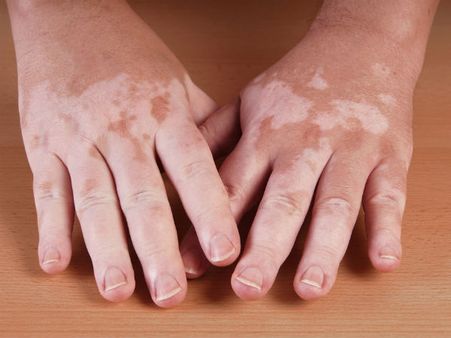Just In
- 8 min ago

- 7 hrs ago

- 16 hrs ago

- 18 hrs ago

Don't Miss
- Finance
 1:10 Split Coming Up: Crorepati FMCG ITC Turns Rs 1,50,000 To Rs 1.2 Crore; Makes Big Announcement; BUY?
1:10 Split Coming Up: Crorepati FMCG ITC Turns Rs 1,50,000 To Rs 1.2 Crore; Makes Big Announcement; BUY? - Sports
 Pakistan vs New Zealand Playing 11: PAK vs NZ 4th T20I Team News, Predicted Lineup And Other Details
Pakistan vs New Zealand Playing 11: PAK vs NZ 4th T20I Team News, Predicted Lineup And Other Details - Education
 JEE Main Result 2024 Out, Telangana's 15 Toppers Shine, Check Statewise List of 56 Candidates with Perfect 100
JEE Main Result 2024 Out, Telangana's 15 Toppers Shine, Check Statewise List of 56 Candidates with Perfect 100 - News
 Mangalsutra Row: Did Indira Gandhi Donate Gold During The 1962 War? The Facts Behind Priyanka's Claim
Mangalsutra Row: Did Indira Gandhi Donate Gold During The 1962 War? The Facts Behind Priyanka's Claim - Movies
 Kota Factory 3 OTT Release Date, Platform: When Will Jitendra Kumar's Web Series Premiere On Netflix?
Kota Factory 3 OTT Release Date, Platform: When Will Jitendra Kumar's Web Series Premiere On Netflix? - Travel
 Escape to Kalimpong, Gangtok, and Darjeeling with IRCTC's Tour Package; Check Itinerary
Escape to Kalimpong, Gangtok, and Darjeeling with IRCTC's Tour Package; Check Itinerary - Technology
 OPPO Find X7 Ultra Camera Deep-Dive: Pushing the Boundaries of Photography on a Smartphone
OPPO Find X7 Ultra Camera Deep-Dive: Pushing the Boundaries of Photography on a Smartphone - Automobiles
 Aston Martin Vantage Launched In India At Rs 3.99 Crore
Aston Martin Vantage Launched In India At Rs 3.99 Crore
World Vitiligo Day 2021: What Is Vitiligo? Causes, Types, Symptoms, Complications And Treatment
Every year, World Vitiligo Day is observed on 25 June. An initiative aimed to build global awareness about vitiligo, the idea of a World Vitiligo Day was first nursed by Steve Haragadon, the founder of the Vitiligo Friends network, and then developed and finalised by Ogo Maduewesi, a Nigerian vitiligo patient who is the founder and Executive Director of the Vitiligo Support and Awareness Foundation (VITSAF).
The first World Vitiligo Day (also defined as "Vitiligo Awareness Day" or "Vitiligo Purple Fun day" from the colour chosen as Vitiligo Awareness Colour) was observed on 25 June 2011. The choice of 25 June as World Vitiligo Day is a memorial to musical artist Michael Jackson, who suffered from vitiligo from the early 1980s until his death.


What Is Vitiligo?
Vitiligo is a long-term skin condition that causes the skin to lose its pigment in patches. The affected area becomes white in colour and has distinctive margins, showing the difference between the individual's original complexion and the patch. It is not limited to any specific part and can affect any part of your body. It can even develop inside your mouth and nose. In most cases, it affects the part of the skin that is exposed to the sun.
Almost 1 per cent of the world's population has vitiligo. Vitiligo destroys the cells (melanocytes) that are responsible for your skin colour and, in turn, no longer will produce the skin pigment, called melanin [1].
Your hair may also turn grey or white if the areas involved have hair. Even though vitiligo can affect many different parts of the body, it is not contagious [2]. Anyone can get vitiligo, and it can happen at any age. For many people, the white patches show up before age 20.

What Causes Vitiligo?
Generally, the condition is caused when the melanocytes (cells that produce skin colour) in one's body stops functioning. However, there is a lack of definite evidence in the medical field about the cause of the skin condition.
However, it is believed that the condition is developed due to the following factors such as stress, genes, exposure to specific chemicals or phenols and catechols, sunburn, and dysfunction of the immune system [3].
What Are The Symptoms Of Vitiligo?
The primary and only symptom of vitiligo is the appearance of flat white spots or patches on the skin. Normally, it does not cause any discomfort, irritation, soreness, or dryness in the skin.

The effects of vitiligo vary between people. For example, some people may have only a handful of white dots that develop no further, while others develop larger white patches and affect larger areas of skin.

What Are The Types Of Vitiligo?
Primarily, vitiligo is classified into two, non-segmental vitiligo and segmental vitiligo [4].
(1) Segmental vitiligo: Segmental vitiligo spreads more rapidly but is considered more constant and stable, and less erratic than the other type of vitiligo. It is much less common and affects only about 10 per cent of people with vitiligo, and is non-symmetrical. Segmental vitiligo usually affects areas of skin attached to nerves arising near the spine.
(2) Non-segmental vitiligo: Non-segmental vitiligo is the most common type, accounting for up to 90 per cent of cases. The patches often appear equally on both sides of the body symmetrically and appear on skin that is commonly exposed to the sun, such as the face, neck, and hands.
Non-segmental vitiligo is further classified as generalised (most common type), acrofacial (on fingers and toes), mucosal (mucous membranes and lips), universal (depigmentation on most of the body) and focal (scattered white patches develop in a discrete area; occurs in young children) [5].

What Are The Complications Of Vitiligo?
Vitiligo does not develop into other diseases, but people with the condition are more likely to experience a painful sunburn, hearing loss, and vision and tear production [6].
A person with vitiligo is more likely to have another autoimmune disorder, such as thyroid problems, Addison's disease, Hashimoto's thyroiditis, type 1 diabetes, or pernicious anaemia. In addition, research shows that vitiligo can cause significant psychological effects.
Who Is At Risk Of Vitiligo?
The condition does not appear to be inherited. Most people with vitiligo do not have a family history of the disorder. But the family history of vitiligo or other autoimmune conditions may increase one's risk even though it does not cause vitiligo [7].
How Is Vitiligo Treated?
In most cases, the goals of vitiligo treatment are to slow or stop the disease, help skin cells that make colour grow again and bring back colour to the white patches of skin. Treatments may not work for every person, and the treatment options vary according to the following reasons:
- the severity of your condition
- location and size of your patches
- the number of patches you have
- how widespread the patches
- how you respond to treatment
- Topical creams: Side effects can include skin shrinkage, thinning, excess hair growth and skin irritation.
- Psoralen and ultraviolet A (PUVA) therapy: This treatment combination requires you to take psoralen as a pill or apply it to your skin as a cream. PUVA side effects include sunburn, nausea, itching and hyperpigmentation
- Narrowband UVB light: This is an alternative to traditional PUVA therapy
- Excimer laser treatment: This treatment helps with small areas of patches and takes less than four months, two to three times per week
- Surgical options: Surgical options are available when medications and light therapy do not work. Types of surgery for vitiligo include skin grafting, melanocyte transplants and micro-pigmentation
- Depigmentation
- Oral medication
The types of treatments include medical, surgical, or a combination of both, and some may cause side effects [8]. Medical treatment for vitiligo includes the following:

On A Final Note…
Research on vitiligo has increased in the past years. Newer technology allows for advances in genetic research to understand how and what causes vitiligo. Other studies on vitiligo include looking into how trauma or stress triggers vitiligo, how genetics affect vitiligo, and how the chemical signals of the immune system play a role in the condition.
-
 healthWorld Vitiligo Day 2023: Are You At Risk Of Developing Vitiligo?
healthWorld Vitiligo Day 2023: Are You At Risk Of Developing Vitiligo? -
 nutritionWorld Vitiligo Day 2021: List Of Foods Which People With Vitiligo Should Eat And Avoid
nutritionWorld Vitiligo Day 2021: List Of Foods Which People With Vitiligo Should Eat And Avoid -
 disorders cureIs Hyperpigmentation A Serious Skin Condition? Know About The Causes, Treatments and Prevention
disorders cureIs Hyperpigmentation A Serious Skin Condition? Know About The Causes, Treatments and Prevention -
 disorders cure10 Natural Remedies To Treat Vitiligo
disorders cure10 Natural Remedies To Treat Vitiligo -
 pregnancy parentingWhite Lung Syndrome: What Are The Symptoms Of The Disease Rampant In China? How Does It Spread?
pregnancy parentingWhite Lung Syndrome: What Are The Symptoms Of The Disease Rampant In China? How Does It Spread? -
 healthWorld HIV/AIDS Day: What Is The Difference Between HIV and AIDS?
healthWorld HIV/AIDS Day: What Is The Difference Between HIV and AIDS? -
 healthDengue 101: Causes, Symptoms, Risks, Complications, Treatment, Prevention, Diet And More
healthDengue 101: Causes, Symptoms, Risks, Complications, Treatment, Prevention, Diet And More -
 healthDiarrhoea 101: Causes, Symptoms, Risks, Complications, Treatment, Prevention, Diet And More
healthDiarrhoea 101: Causes, Symptoms, Risks, Complications, Treatment, Prevention, Diet And More -
 health'Epileptic Nightmare' of Neurocysticercosis: The Hidden Epidemic of Parasites Causing Epilepsy
health'Epileptic Nightmare' of Neurocysticercosis: The Hidden Epidemic of Parasites Causing Epilepsy -
 pregnancy parentingLife-Threatening Risk During Pregnancy: Sepsis Can Harm Both Mother and Baby
pregnancy parentingLife-Threatening Risk During Pregnancy: Sepsis Can Harm Both Mother and Baby -
 healthStay Informed: The Hidden Dangers of Legionnaires' Disease and How to Prevent It
healthStay Informed: The Hidden Dangers of Legionnaires' Disease and How to Prevent It -
 healthMyths vs Facts: Can A Single Mosquito Bite Really Give You Dengue?
healthMyths vs Facts: Can A Single Mosquito Bite Really Give You Dengue?


 Click it and Unblock the Notifications
Click it and Unblock the Notifications



